Mallows Bay-Potomac River National Marine Sanctuary
Mallows Bay is most renowned for its "Ghost Fleet" the partially submerged remains of more than 100 wooden steamships that were built in response to threats from World War I-era German U-boats that were sinking ships in the Atlantic. Although the ships never saw action during the war, their construction at more than 40 shipyards in 17 states reflected the massive national wartime effort that drove the expansion and economic development of communities and related maritime service industries. The fleet was brought to the Potomac River to be salvaged for scrap metal by a company in Alexandria, Virginia, not far from the sanctuary site.
Videos
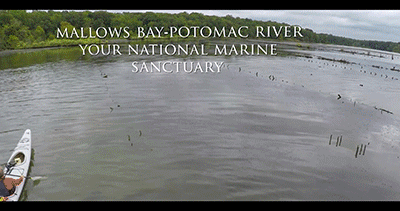
Overview video of the new Mallows Bay-Potomac River National Marine Sanctuary.
Credit: NOAA Office of National Marine Sanctuaries
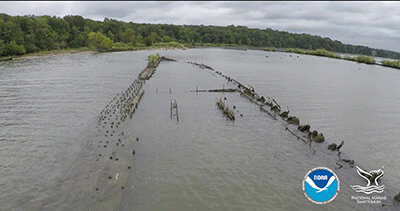
Aerial footage of Mallows Bay-Potomac River National Marine Sanctuary.
Credit: NOAA Office of National Marine Sanctuaries
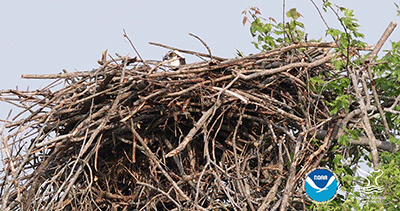
Nature and wildlife at Mallows Bay-Potomac River National Marine Sanctuary.
Credit: NOAA Office of National Marine Sanctuaries
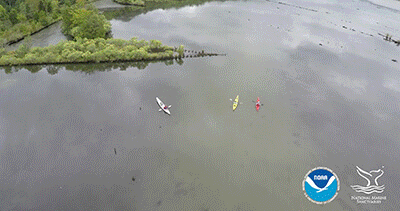
Outdoor education and recreation at Mallows Bay-Potomac River National Marine Sanctuary.
Credit: NOAA Office of National Marine Sanctuaries
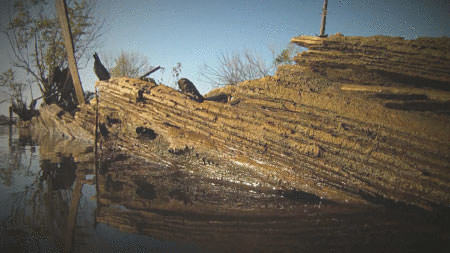
Mallows Bay video Secrets of the Chesapeake.
Credit: Maryland Public Television
Maps and stills
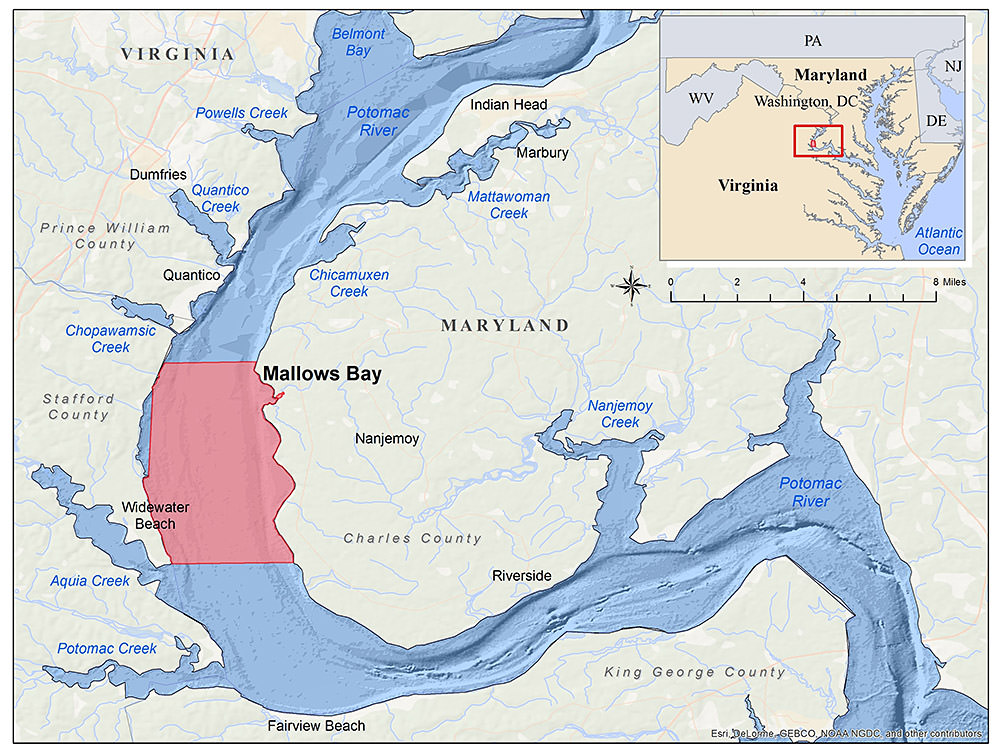
Map of boundaries for Mallows Bay-Potomac River National Marine Sanctuary
Credit: NOAA
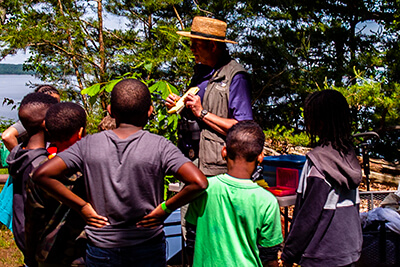
Students from J.C. Parks Elementary School listen to a presentation doing their field trip at Mallows Bay-Potomac River National Marine Sanctuary.
Credit: Nick Zachar/NOAA
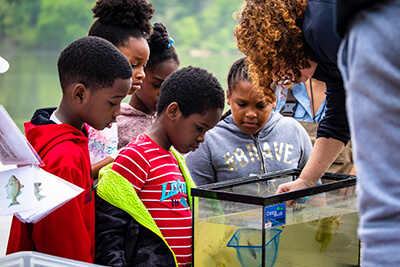
Students from J.C. Parks Elementary School learn about different fish species during their field trip at Mallows Bay-Potomac River National Marine Sanctuary.
Credit: Matt McIntosh/NOAA
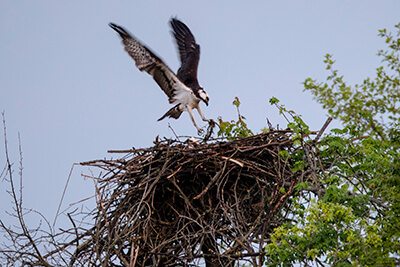
An osprey tends its nest at Mallows Bay-Potomac River National Marine Sanctuary.
Credit: Matt McIntosh/NOAA
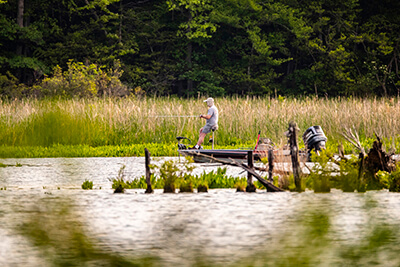
Mallows Bay-Potomac River National Marine Sanctuary is a popular destination for local fishing enthusiasts.
Credit: Matt McIntosh/NOAA
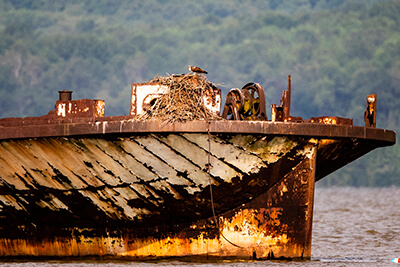
The historic shipwrecks of Mallows Bay-Potomac River National Marine Sanctuary provide habitat for birds and other wildlife
Credit: Matt McIntosh/NOAA
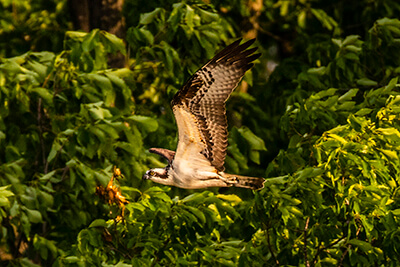
An osprey soars near forest at Mallows Bay-Potomac River National Marine Sanctuary.
Credit: Matt McIntosh/NOAA
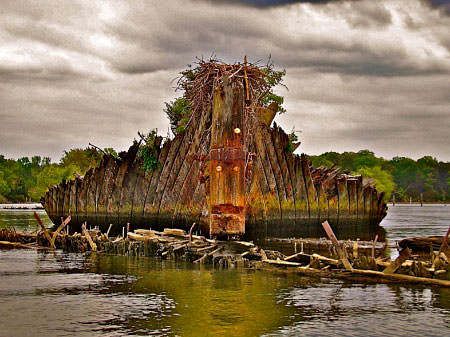
Benzonia resting on Caribou stern.
Credit: Don Shomette
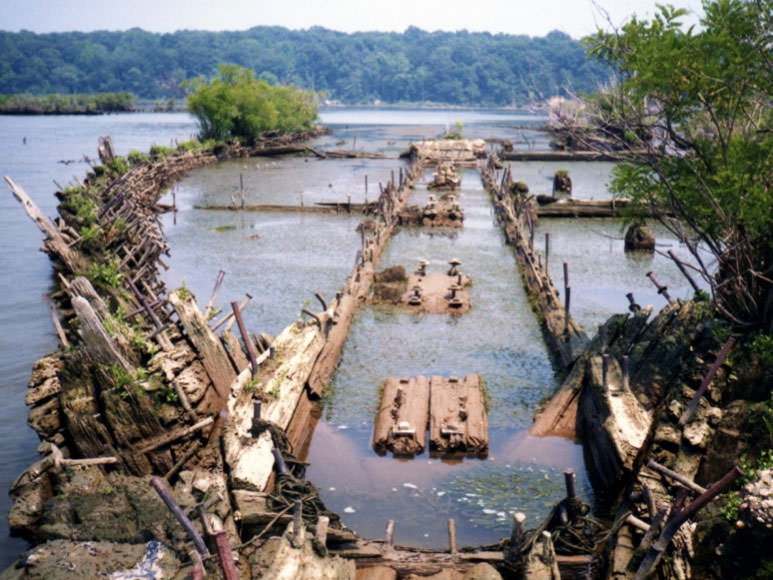
Vessel at low tide showing hull frame.
Credit: Don Shomette
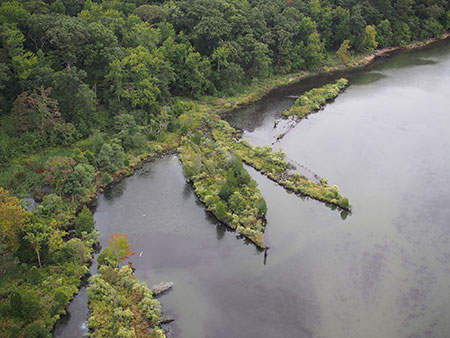
Mallows Bay contains more than 100 known and potential shipwrecks.
Credit: Marine Robotics & Remote Sensing, Duke University
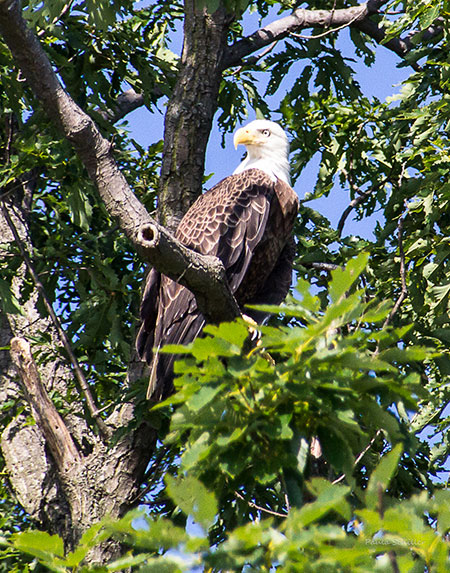
A bald eagle at Mallows Bay.
Credit: Paula Schiller, courtesy of MDNR
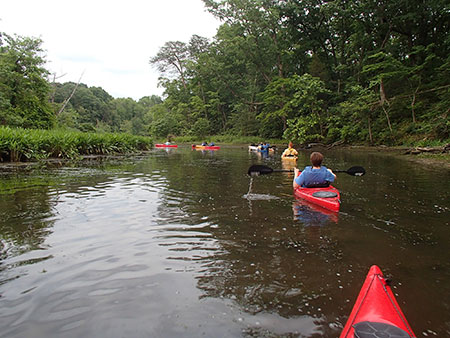
Kayakers explore the nooks and waters of Mallows Bay.
Credit: Kimberly Hernandez, MDNR Chesapeake and Coastal Service
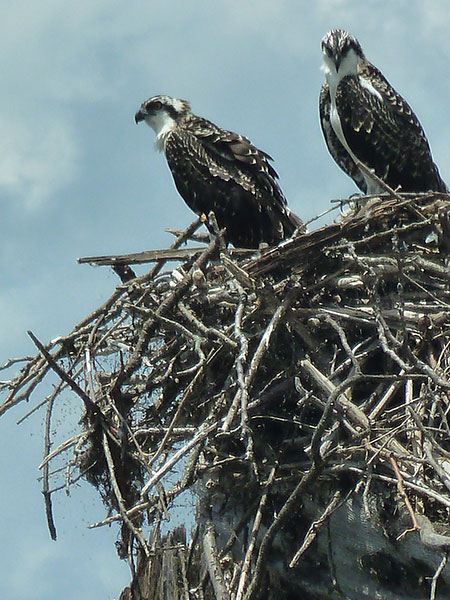
An osprey pair in a nest atop a shipwreck in Mallows Bay.
Credit: Daryl Byrd, courtesy of MDNR
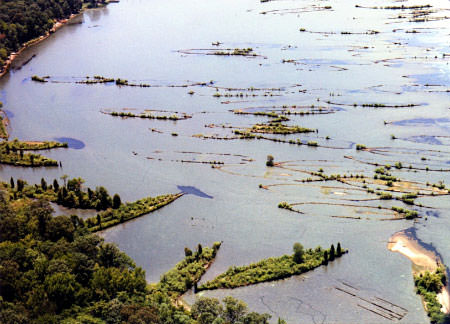
Aerial view of Mallows Bay.
Credit: Don Shomette
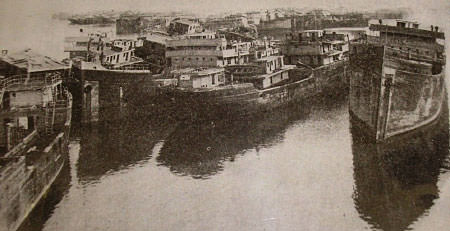
The Ghost Fleet grounded in Mallows Bay, circa 1925.
Credit: Don Shomette
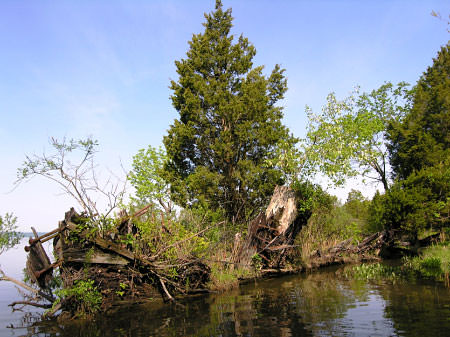
Ship hulls have provided the structure for ecologically-important habitats.
Credit: Don Shomette
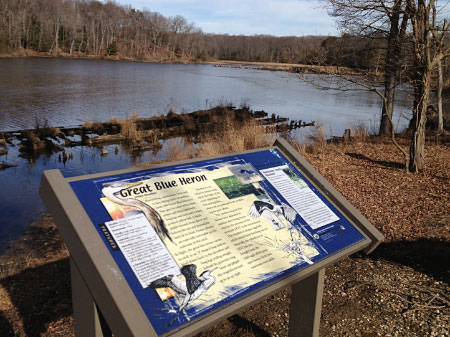
Mallows Bay is home to abundant wildlife including bald eagles, great blue herons, and ospreys.
Credit: Don Shomette
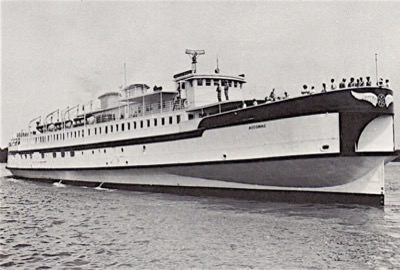
The M.V. Accomac was built as the Virginia Lee in Quincy, Mass. in 1928. Following service as a transatlantic convoy vessel during World War II, the vessel was repurposed as a car ferry plying the southern Chesapeake. The Accomac was abandoned at Mallows Bay in 1973 and remains the most visible and recognizable wreck of the sanctuary.
Credit: Mariner’s Museum, Newport News, VA.
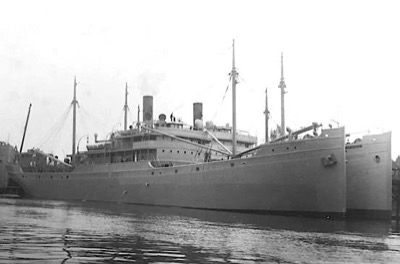
Built in Portland Ore. for the U.S. Emergency Fleet Corps, the S.S. Afrania was sold for salvage and burned in Mallows Bay prior to 1926. The vessel now lies partially submerged directly against the shoreline, with significant vegetation overgrowth.
Credit: National Archives and Record Service
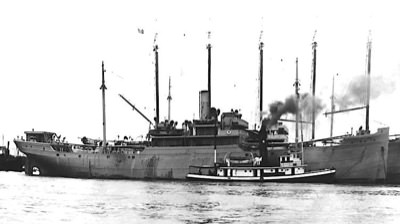
Built for the U.S. Emergency Fleet Corps. and launched in August 1918 only months before the end of World War I, the S.S Boone was eventually sold for salvage and grounded at Mallows Bay in 1922.
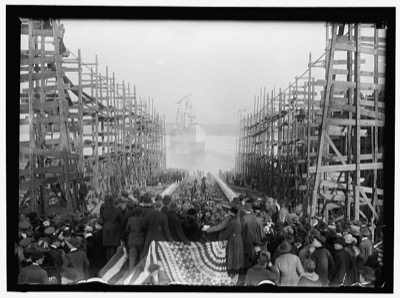
The launching of U.S. Emergency Fleet Corps vessel Gunston Hall at a shipyard in Alexandria, Va.
Credit: Library of Congress
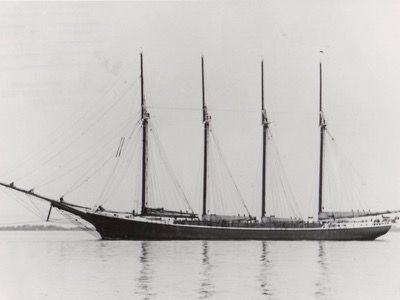
A wooden, four-masted schooner, the Ida S. Dow was anchored in Mallows Bay in 1934 to serve as a floating dormitory for the workers salvaging the grounded Emergency Fleet wrecks. By 1940 the vessel had been abandoned and scuttled at its present resting location.
Credit: Mariner’s Museum, Newport News, VA.
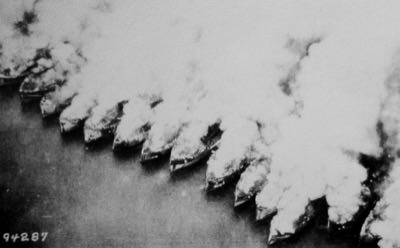
Grounded U.S. Emergency Fleet vessels were burned to the waterline throughout multiple salvage periods at Mallows Bay in order to ease the recovery of their scrap metal.
Credit: National Archives
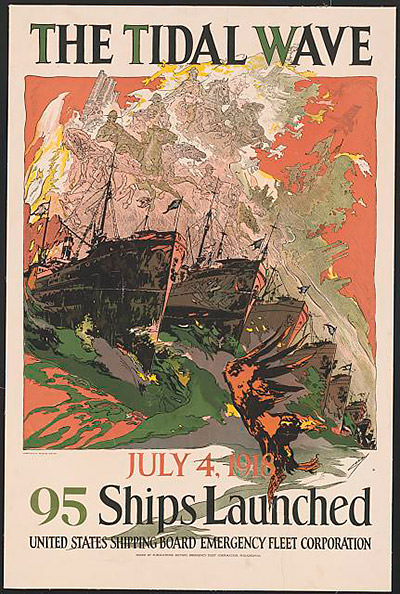
An illustrative poster celebrating ships launched by the U.S. Emergency Fleet Corps. as part of the country’s engagement in World War I.
Credit: Library of Congress
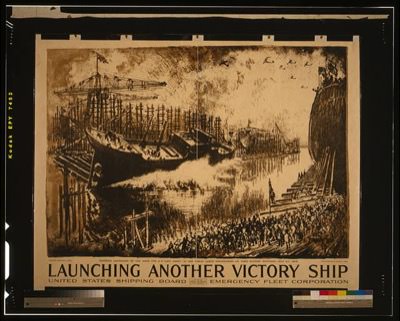
An illustrative poster advertising the work of the U.S. Emergency Fleet Corps. during World War I.
Credit: Library of Congress

An illustrative poster advertising the work of the U.S. Emergency Fleet Corps. during World War I.
Credit: Library of Congress
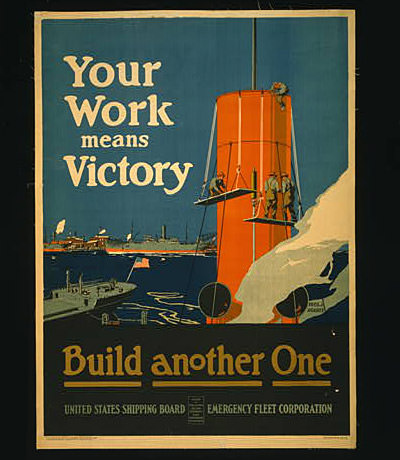
An illustrative poster advertising the work of the U.S. Emergency Fleet Corps. during World War I
Credit: Library of Congress

